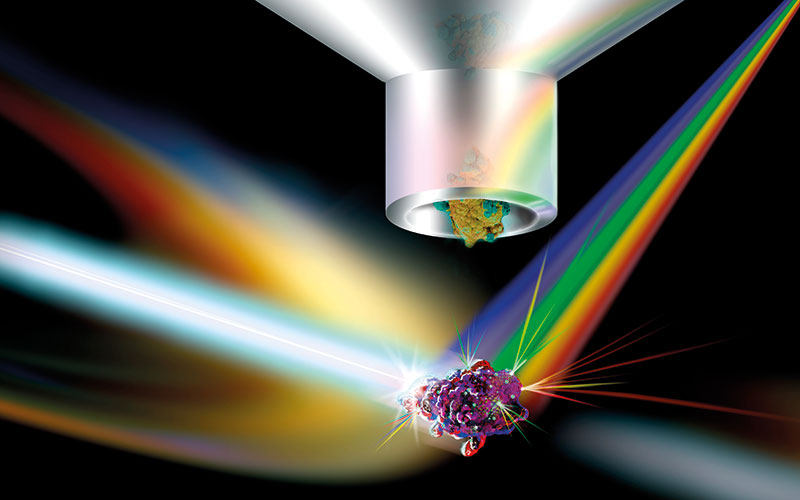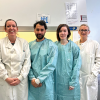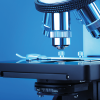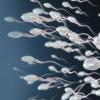Clinical Scientist Helen Watson explains the challenges faced working in a leading haematopoietic stem cell transplantation centre.

Flow cytometry has come a long way – from the innovation of the coulter principle in the 1950s, to the wide variety of cell categorising and sorting uses we see today. The technology and automation of fluorescence-activated cell sorting (FACS) was driven forward when CD4 counts were needed for HIV patient diagnosis and monitoring, but the knowledge gained allowed for much broader application and the process is routinely used in the clinical setting for diagnosis of haematological malignancies, immunodeficiency and to measure impact of treatment.
Working in Newcastle upon Tyne Hospitals NHS Foundation Trust, our flow cytometry service is a combined haematology and immunology laboratory, housing the region’s specialist integrated haematological malignancy diagnostic service (SIHMDS), adult and paediatric immunology and bone marrow transplant support.
Innovative technology
The ever-developing world of primary immunodeficiency (PID) is fascinating, with over 300 disorders now defined by the 2017 International Union of Immunological Societies (IUIS). It includes severe combined immunodeficiency (SCID), which involves genetic defects associated with lymphocyte development and function.
PID is possibly one of the best examples of where innovative technology and management strategies are being used to treat and cure inborn errors of immunology through gene therapy and, more commonly, haematopoietic stem cell transplant (HSCT).
Many patients have a good chance of finding a matched donor through a sibling or a donor registry, but approximately 25% need alternative sources. Haploidentical (HLA-partially matched) donors are then used. A haploidentical donor can be in the form of an unrelated donor or, possibly better still, a parent; the advantages being they are local and invested. However, patients are at higher risk of graft versus host disease (GvHD), so increased manipulation of the donation is required. Conversely the transplant must not be compromised so much so that the donation becomes unsuccessful. The aim is prevention of GvHD and helping the patient become immunocompetent and healthy once again.
International trial
As part of an international trial by Bellicum Pharmaceuticals, patients were treated with an innovative form of HSCT. Haploidentical donations are routinely depleted of B cells and T cells to prevent graft verse host disease. For this trial, the donations were depleted of B cells and specifically TCRαβ T cells, leaving stem cells, NK cells and TCR. In addition, some T cells were genetically modified (Rivo-cel) and “given back” post-transplant to help boost the immune reconstitution and prevent infection. The genetic modification meant that should these T cells cause trouble a drug (Rimiducid) could be given that induces apoptosis in these cells, and therefore allow recovery from GvHD.
One of the cases seen in Newcastle presented a particular challenge, where routine analysis of the lymphocyte subsets proved inadequate.
After an uncomplicated pregnancy the patient presented with severe atypical dermatitis. Over the next few months there were recurrent respiratory infections, eczema and a variety of food allergies developed. This prompted further investigations that showed CD4 lymphopenia, absent class switch memory B cells, raised eosinophil and markedly raised IgE.
The patient was transferred to the care of immunology and a diagnosis of DOCK8 (a protein required to regulate cytoskeletal organisation of immune cells) deficiency was confirmed through genetic analysis (homozygous deletion of exons 3 to 7 in the DOCK8 gene). In 2017, the patient underwent HSCT as part of the Bellicum trial where the donor was the patient’s mother.
As per protocol, patients are routinely monitored post-HSCT for signs of immune reconstitution with early signs of T cell counts normalising, the presence of naïve T cellls and eventually class switch memory B cell all immunological markers of a functioning immune system.
The patient was discharged and seen regularly in a outpatient clinic setting. On one occasion, approximately 9 months after HSCT, we noticed a significant rise in class switch memory (CSM) B cell (CD19+ CD27+ IgD negative).
Erroneous result
Although unusual, there was no initial cause for concern, other results were in keeping and quality controls processes all passed. However, on the same day another patient also showed a similar rise in CSM B cells. This was unusual; both tests were repeated, new reagents used, all the usual checks performed.
However, when reviewing both patients’ records, we quickly noticed they were both post-HSCT and part of the Bellicum trial. After some consultation with their respective clinicians we uncovered the cause of the erroneous result was in fact the add-back T cells – Rivo-Cel.
Several months had passed since the last patient was recruited in Newcastle, but the patients were still on the trial. The add-back cells are there to improve their immune reconstitution, but after re-reading the protocol we learnt these T cells were also labelled with CD19, for the purpose of identifying and monitoring them.
Adding CD3 to our B cell phenotyping showed these cells to be CD3+ and CD19+, unlike any other naturally occurring cell. So their slightly adapted phenotype of CD3+, CD27+ IgD neg and CD19+ all meant they snuck into the CSM B cell population. Adding anti-CD3 and drawing these cells out of the genuine B cell population meant we could easily separate the cells and provide accurate counts.
What was clear is that with such pioneering processes it is really important for biomedical scientists to keep up to date – communication between clinicians and laboratory staff and indeed between centres is vital. An awareness of what is happening to the patients we look after is key and we need to be ready to adapt our processes to ensure that we are providing results that are accurate and of real value.
Helen Watson is a Clinical Scientist in the flow cytometry laboratory, in the blood sciences section at Newcastle upon Tyne Hospitals NHS Foundation Trust
Image credit | Photo library




